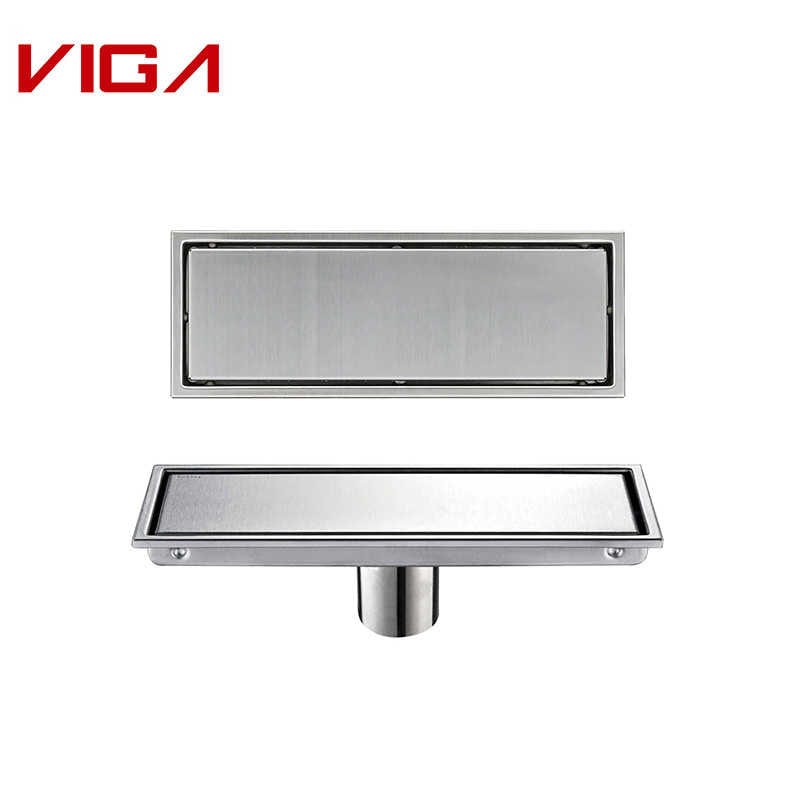UN drain de sous-sol détourne l’eau stagnante pour éviter les inondations potentielles dans les sous-sols. Parce que les sous-sols sont souterrains, ils peuvent souvent rencontrer de grandes quantités d’eau stagnante. Un siphon de sol minimisera les dégâts que cette eau peut causer.
Lors de l’installation d’un drain de sous-sol, vous devez réfléchir attentivement à son emplacement. Vous devez également vous assurer que vous disposez de tous les outils et accessoires appropriés pour effectuer le travail correctement.. Même si l’installation d’un siphon de sous-sol peut sembler un projet simple, cela implique de couper du béton, ce qui en fera un travail fastidieux et exigeant en main-d'œuvre.

Étape 1 – Planifier le drain du sous-sol
Vous devez d’abord planifier l’emplacement de votre drain de sous-sol. L'emplacement idéal sera dans la zone la plus basse de votre sol car l'eau s'accumulera généralement dans la zone la plus basse..
Pensez également à tout équipement dans votre sous-sol. Par exemple, si vous avez installé votre chauffe-eau au sous-sol, vous aurez souvent besoin d'un siphon de sol à proximité.
Étape 2 – Trouvez les tuyaux de plomberie
Votre sous-sol devrait déjà avoir des tuyaux de plomberie. Essayez de les trouver et déterminez comment vous allez pénétrer dans les conduites de plomberie.. S'il n'y a pas de conduites de plomberie dans votre sous-sol, vous devrez trouver un moyen de gérer les eaux usées.
Étape 3 – Percez le drain du sous-sol
Utilisez le foret creux et votre perceuse électrique pour percer un trou à l'endroit où vous souhaitez installer votre siphon de sous-sol.. Vous devez utiliser le diamètre de coupe-trou adapté aux tuyaux en PVC et au couvercle de vidange que vous avez achetés.. Percez jusqu'à une profondeur sous le sol en béton où les tuyaux pourront s'insérer sans danger..
Étape 4 – Couper le sol
Vous devez maintenant utiliser la scie circulaire pour creuser une tranchée le long du sol de votre sous-sol où vous poserez les tuyaux de plomberie en PVC.. Lors du découpage des tranchées, assurez-vous que vous ne risquez pas de couper des câbles ou des tuyaux électriques.
Étape 5 – Connectez-vous à l'égout
Raccordez les tuyaux de drainage aux tuyaux d'égout. Si vous n’avez pas de tuyaux d’égout dans votre sous-sol, vous pourrez peut-être installer un puits en dessous du niveau de votre sous-sol. Ce serait un projet très coûteux mais produirait les effets requis.
Étape 6 – Enterrer le tuyau
Avant d'enterrer les tuyaux, tu devrais vérifier qu'ils ne fuient pas. Versez un peu d'eau dans les égouts et vérifiez tout signe évident de fuite.. Une fois que vous êtes satisfait de votre travail, tu peux te mettre au travail pour enterrer les tuyaux. Commencez par les recouvrir de sable; puis remplissez le reste de la tranchée avec du béton.
 Fournisseur d'usine de robinetterie iVIGA
Fournisseur d'usine de robinetterie iVIGA

